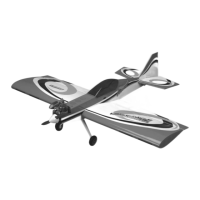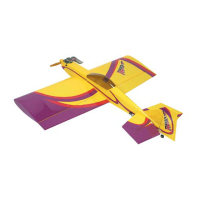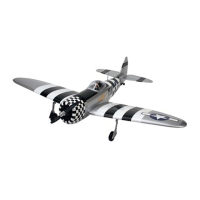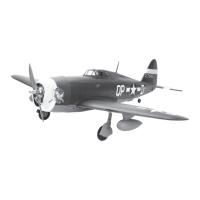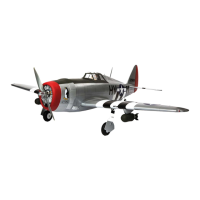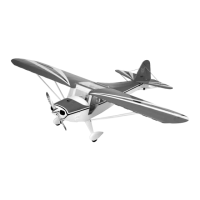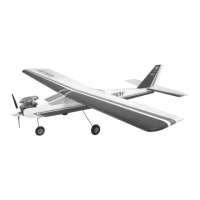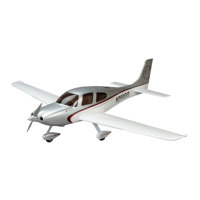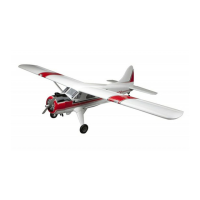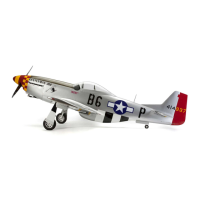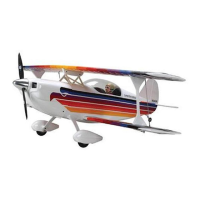Do you have a question about the Hangar 9 Tiger Moth 20cc and is the answer not in the manual?
Explains hazard terms (NOTICE, CAUTION, WARNING) used in the manual.
Explains the structure and use of checkboxes for tracking assembly steps.
Covers safety regarding compatible components and safe flying practices.
Details safety precautions for propeller handling, batteries, and small parts.
Recommends safe flying areas and courteous behavior towards other users.
Explains the meaning of various symbols used throughout the assembly instructions.
Lists all necessary tools for assembling the model.
Outlines initial steps like removing parts, inspecting for damage, charging batteries, and setting up the radio.
Instructions for attaching landing gear struts to the fuselage using specific screws.
Guides on attaching cabane struts to the fuselage based on provided lengths.
Instructions to mark a center line and positions on the stabilizer for control horn mounting.
Details on attaching the fin component to the stabilizer using specific screws.
Instructions for mounting the tail wheel bracket using screws and steering arms.
Guides on attaching the engine mounts to the firewall using specific screws.
Instructions for mounting the receiver and ignition switches in the fuselage using hardware.
Details on securing the receiver and battery plate in the fuselage using screws and washers.
Guides on placing servo horns and checking their movement direction.
Instructions for securing the radio compartment cover using screws.
Guides on using silicone adhesive to attach the dummy oil tank to the fuselage.
Instructions for preparing the servo mounting plate by threading screws and hardening holes.
Guides on installing aluminum fittings into the wing panels flush to the surface.
Instructions on bending brass tabs at an angle for rigging attachment.
Guides on fitting and securing brackets to the center bracket of the transport jig.
Details on finding and marking the recommended center of gravity location on the wing.
Instructions to check rudder movement direction using the transmitter and reverse servo if needed.
Essential step to check battery voltage before flight to prevent crashes.
Verifies transmitter battery voltage, crucial for safe operation.
Guidance on placing the model, checking controls, taxiing, and achieving takeoff.
Outlines what the limited warranty covers, including defects in materials and workmanship.
Explains how to obtain warranty service, including contact information and RMA process.
Provides contact details for warranty and service support across different regions.
